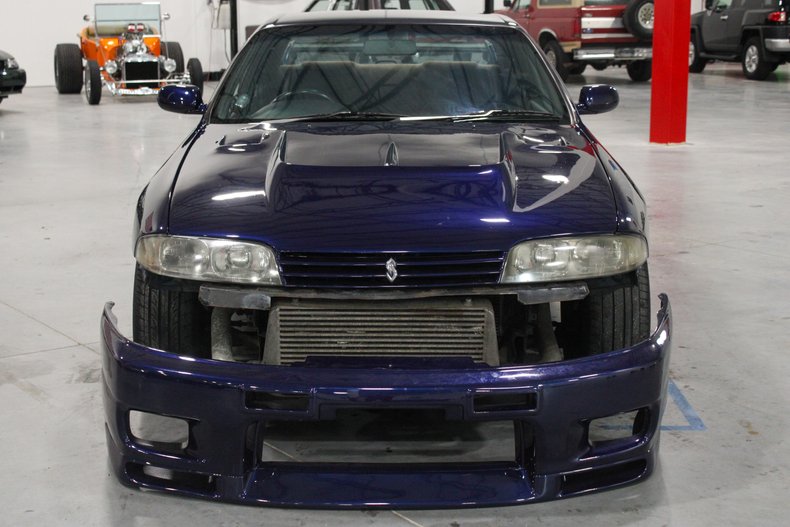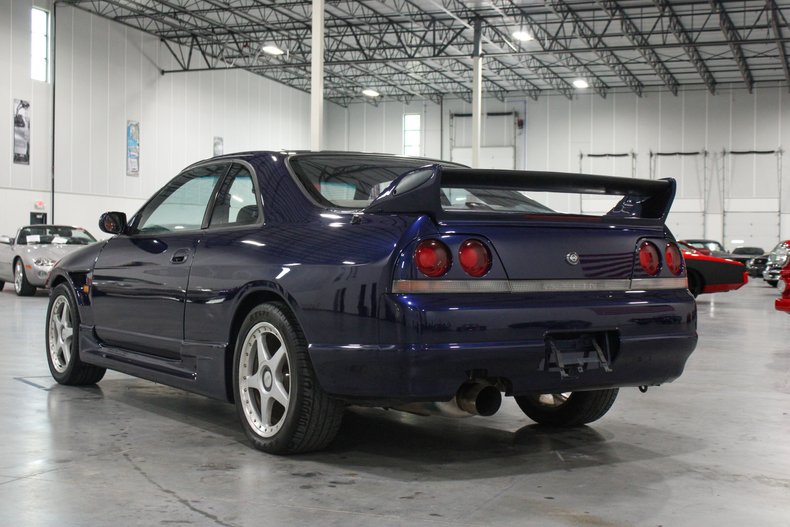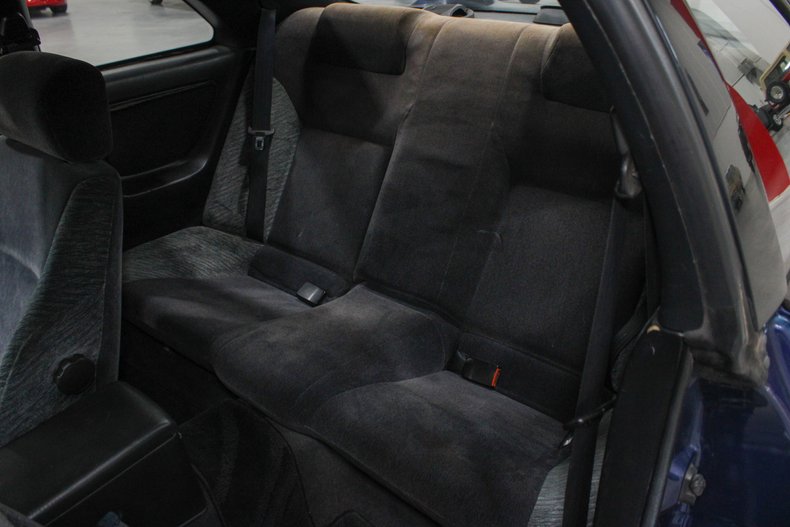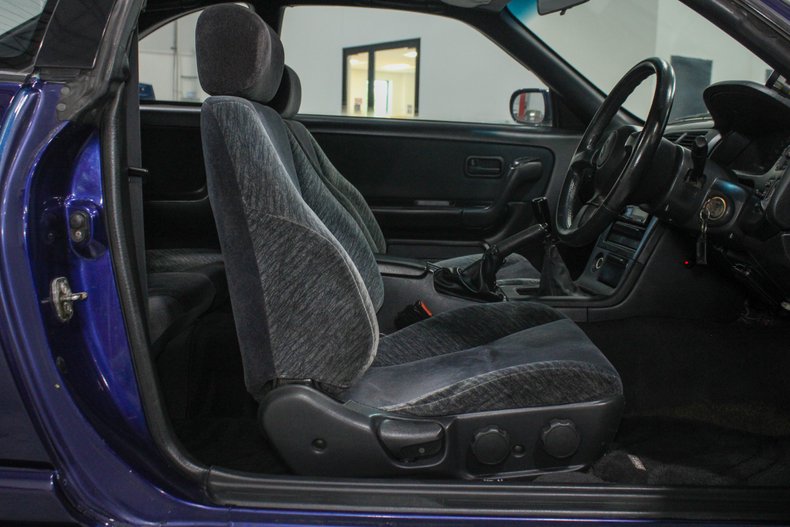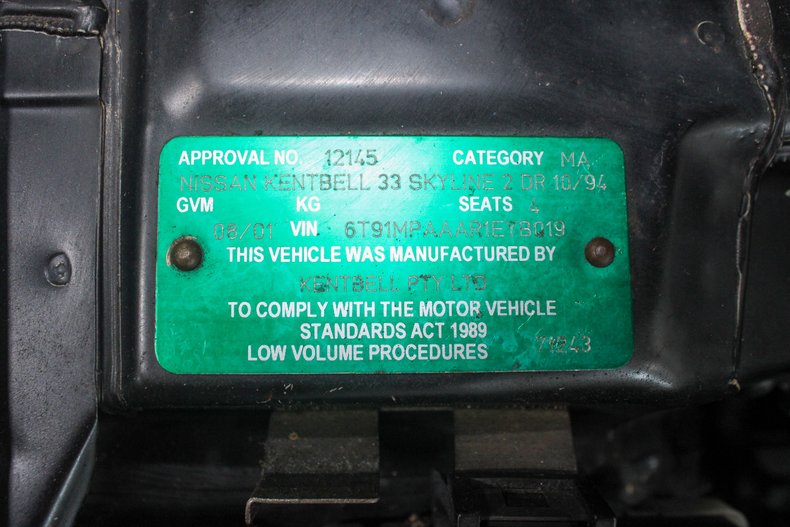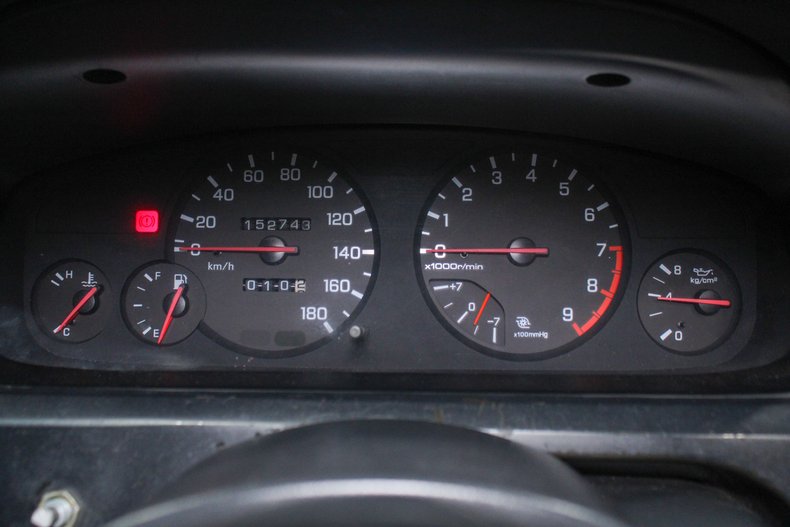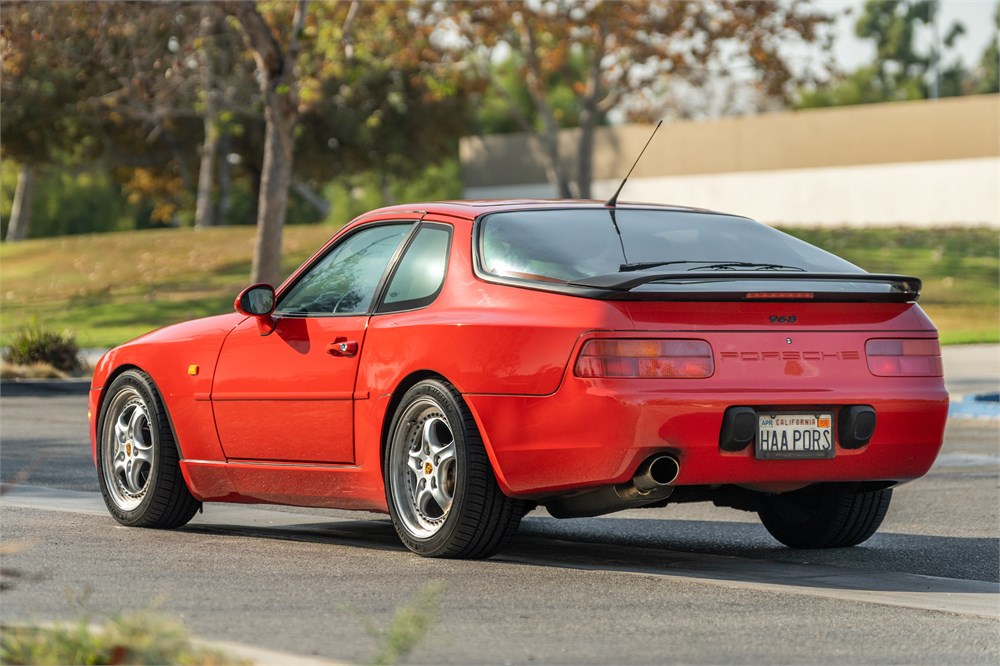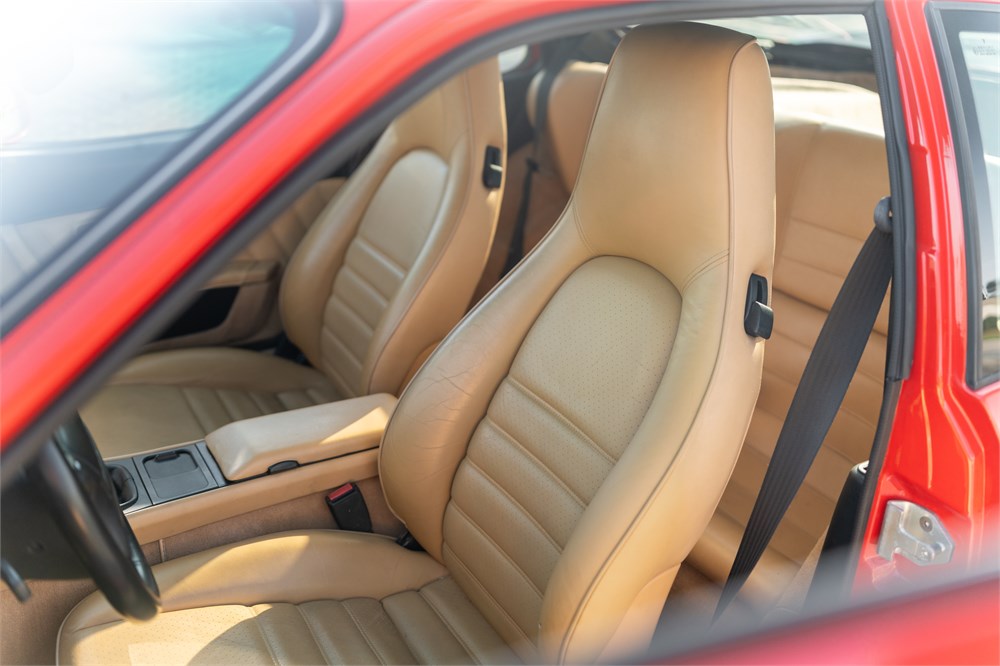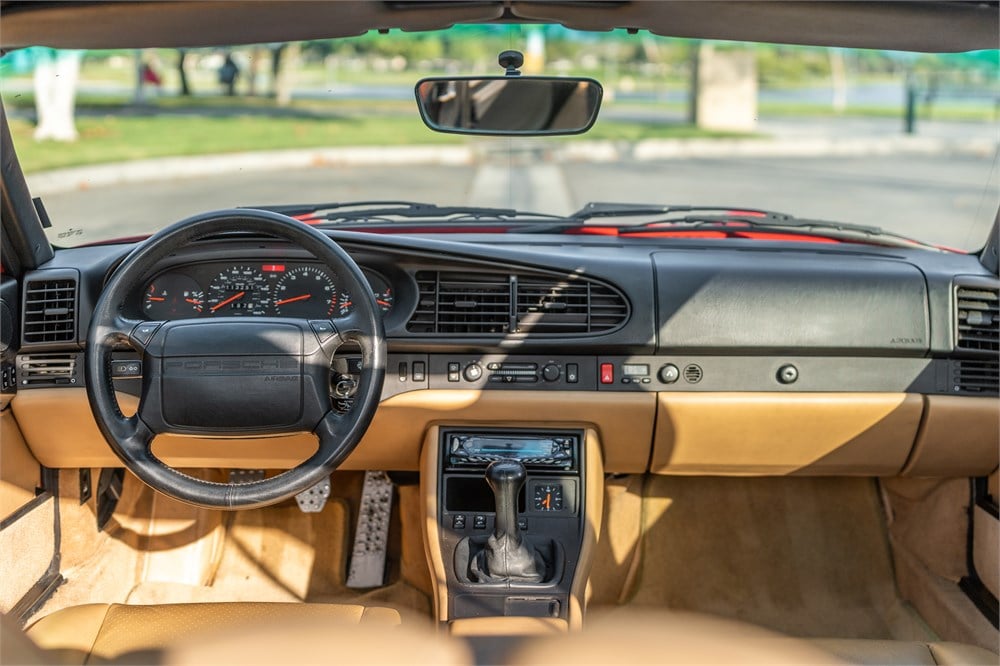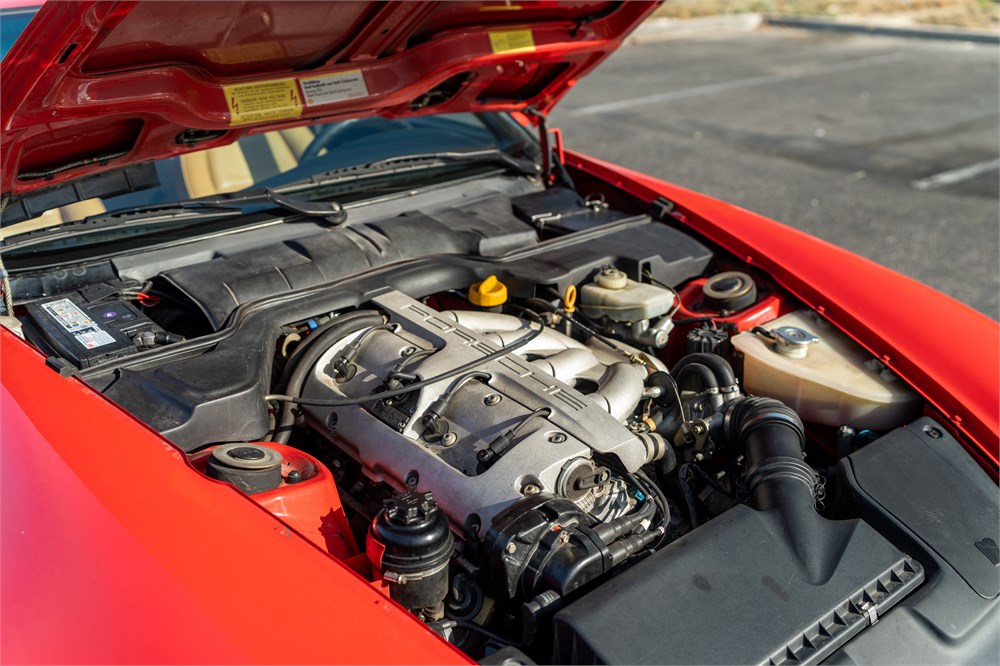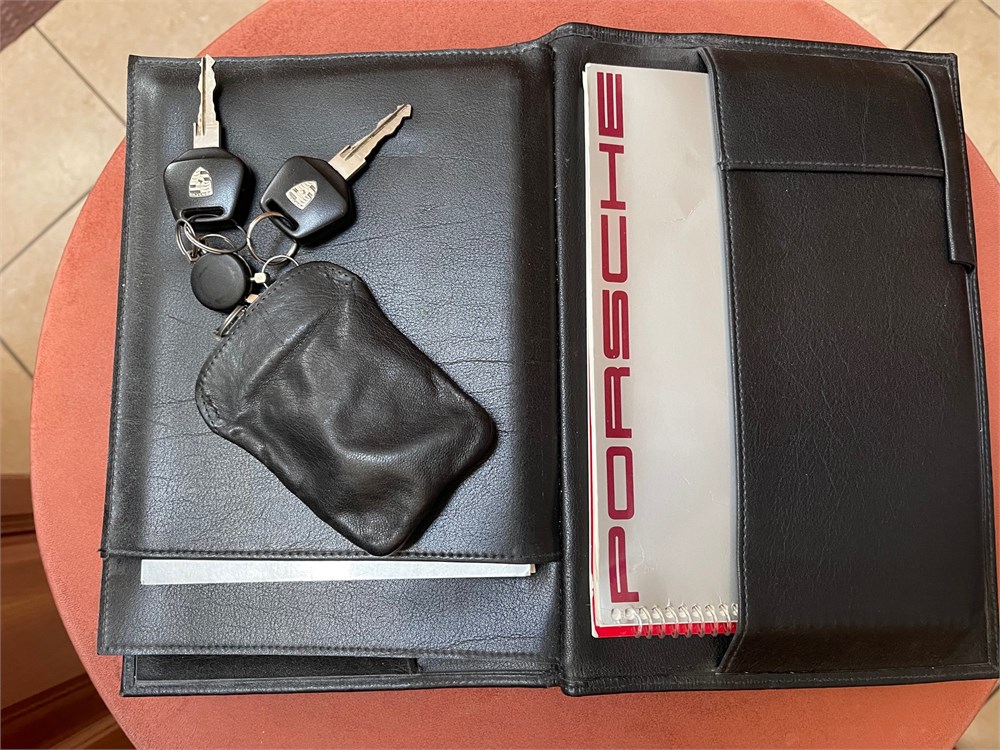Pontiac was in one of its “we secretly kinda want to be European” moods when it was working on the new third-generation ’82 Firebird Trans Am. The division often cast its gaze across the Atlantic for inspiration, whether in name (GTO, Grand Prix, 2+2) or in style. John DeLorean wanted radial tires for the 6.5-Litre GTO but couldn’t get it okayed by the bean counters; the late-’60s OHC-6 engine had a decidedly continental vibe; the ’73 Grand Am was pushed hard as a European-type sports sedan despite an available 455 under the hood (though billed as a Euro-esque 7.4 Litre) and a two-ton curb weight. This tendency could be seen even after the ’70s, when a badge-engineered Chevette was called the T1000 because alphanumeric naming conventions were in vogue, and the Australian-built new-millennium GTO was pitched as a BMW 3-series competitor.
Shaker hoods, plastic wheel spats, and hood-width bird decals were not part of the plan for the new-for-’82 Trans Am. Indeed, the model itself almost didn’t make it for 1982, so keen was Pontiac to distance itself from its Burt Reynolds-tinged past. Instead, the new 1982 Trans Am presented a smooth, cool, technical vibe with ads touting its aero-friendly, ultra-efficient .31 coefficient of drag. This compared to its all-American, rock-and-roll Z28 sibling, with its five-spoke wheels, bright colors, rocker stripes, and tire-smokin’ yee-haw American-muscle car-reborn presence. Despite their shared underpinnings, the Z28 was Journey; the Trans Am was the Eurythmics.
![Color closeup of the hood and grille area on a 1984 Pontiac Trans Am.]()
![Color closeup of the bird on the hood on a 1984 Pontiac Trans Am.]()
![Color closeup of the head lamp, fender, wheel and tire on a 1984 Pontiac Trans Am.]()
![Color closeup of the head lamp and grille on a 1984 Pontiac Trans Am.]()
Hindsight and history suggest that maybe Pontiac took things a step too far; the man in the street in 1982 couldn’t tell a Trans Am from a base Firebird. Lesser ’Birds could get the same wheel trims and hatch-lid spoiler as the top-of-the-line car did, so how could anyone tell? Car nerds knew to look for the offset-scoop hood, a style remnant of the turbocharged second-gen Trans Am despite that engine going away. T/A also got behind-the-front-wheel heat extractors and super-subtle aero enhancements ahead of each wheel, both low-key nods to formerly bold trademarks.
Of course, being subtle was the antithesis of traditional Trans Am buyers, so it should have been no surprise when sales plummeted, despite (or because of?) the slick new style. The division sought to rectify this issue with some haste: barely a year past launch, Pontiac debuted its Daytona Pace Car edition Trans Am, which added several crucial pieces (including ground effects that encircled the body) to keep it from looking like base model machines.
![Color closeup of the engine bay in a 1984 Pontiac Trans Am, 5.0 HO engine.]()
![Color closeup of the air cleaner area in the engine bay of a 1984 Pontiac Trans Am, 5.0 HO engine. Above is the hood with the air scoop hole.]()
The style became more distinctive as the power improved. GM’s top F-body engine in ’82 was a twin throttle-body-injected five-liter small-block pumping out 165 horses; the five-liter Mustang of the era had fewer horses, but was lighter, and so was a marginally better performer. Chevy engineers built a “development project” Camaro and raced it at the grueling 24 Hours of Nelson Ledges road race. Thus proven, the resulting 190-hp 305, called “HO” (for “high output,” which seems silly now but makes sense for the era in which it was built) became the F-body’s top powerplant in late 1983 and ’84. Alphanumeric code nerds will know it as L69, but the HO designation was in Pontiac’s naming convention for its top engines since the ’60s.
The mods boil down to good old-fashioned hot rodding: improved breathing, higher compression, better exhaust, and a hotter cam. Chevy installed the camshaft from the just-launched C4 Corvette; this increased both valve lift and duration, as well as moving the power peak and torque peak higher in the rev band. The engineers ditched the throttle-body fuel injection in favor of a four-barrel Rochester carb with electronic feedback control—maybe not a bad move when Chevy’s Cross-Fire Injection was cruelly called “Cease-Fire Injection” by its detractors. The new air cleaner assembly was said to be good for 12 horsepower by itself. Exhaust was also significantly revised: The new system started with 2-1/4-inch header pipes, flowed through a Corvette catalytic converter, and used a 2-3/4-inch single pipe to blow through the muffler and short twin pipes that grew from it. Engineers also installed a knock sensor that could enable a boost in power to a nice round 200 horses if the engine was run on premium unleaded; the sensor would inform the electronic ignition, which then adjusted engine timing automatically. Abandoning the higher-tech electronic fuel injection wasn’t necessarily in keeping with Europhile aspirations, but there’s little argument that it worked.
![Color image of the interior, dash, steering wheel, seats, door panel, floor and more in a 1984 Pontiac Trans Am.]()
![Color image of the dash, steering wheel and cluster in a 1984 Pontiac Trans Am.]()
![Color closeup image of the seat in a 1984 Pontiac Trans Am.]()
![Color image of the interior of a 1984 Pontiac Trans Am photographed from above and at a distance.]()
![Color closeup of the dash pad in a 1984 Pontiac Trans Am.]()
![Color closeup of some instrument gauges, volts, oil, fuel and temperature in a 1984 Pontiac Trans Am.]()
![Color closeup of the tachometer in a 1984 Pontiac Trans Am.]()
![Color closeup of the speedometer and odometer in a 1984 Pontiac Trans Am.]()
![Color closeup of the steering wheel and horn button/emblem in a 1984 Pontiac Trans Am.]()
Customer response to the newly invigorated V-8 was as positive as you might imagine: a few hundred were built late in the 1983 model year, but a total of 25,088 L69 Trans Ams were built for 1984: 7,051 of them were five-speed manuals featuring the new lighter flywheel Borg Warner T5 gearbox. A total of 55,374 T/As were built for 1984, so just less than half of all ’84 Trans Ams were equipped with the 5.0 HO. All L69 Trans Ams were required to get beefier suspension, including 32-mm front and 21-mm rear anti-sway bars that helped early third-gen Trans Ams corner at a .83g—higher than a contemporary Z28s, and tuned to stay tidy, rather than hang the tail out. Good-handling American cars weren’t uncommon at that point, but Trans Ams had clung to hot-handling ideals longer than most domestic cars had, even the sporty ones. The WY6 chassis package, as our photo example has, possessed everything the vaunted WS6 package did, including four-wheel-disc brakes, save for a limited-slip differential.
Parallel to the Trans Am line’s performance flowering, Detroit’s convertible resurgence was getting under way. Europe, of course, had never stopped making convertibles, and merrily continued their importation throughout Detroit’s pop-top drought. American manufacturers got back into the ragtop business in the early ’80s, with Chrysler’s K-cars, Ford’s Mustang, Buick’s Riviera, and Cadillac’s Eldorado. The new-for-1982 F-body, meanwhile, was only available as a coupe—with and without removable T-tops.
![Color closeup of the rear seat area and convertible cover on a 1984 Pontiac Trans Am.]()
![Color closeup of the convertible cover on a 1984 Pontiac Trans Am.]()
But what Detroit cannot (or will not) provide gives the automotive aftermarket a foothold. Enter Richard Straman, who initially chopped the tops off Ferraris and made them look as if they rolled out of Maranello that way. Alas, Ferrari conversions were few and far between, so Straman sought out other machines to decapitate. As he told the Los Angeles Times in 1998, “When Detroit got out of the [convertible] business, I knew it was time for me to get in.” Now that’s the all-American entrepreneurial spirit at its best. For a while, the company was converting up to 50 third-gen F-bodies a month (two a day!); the conversion commanded five grand in 1984 dollars—roughly 50 percent more than the ten-grand Monroney advertised for a basic Trans Am or Z28 coupe.
“People think it’s just a matter of cutting off the top and putting on a canvas one,” he told the Los Angeles Times. “But it’s not that simple. Half the work is in re-engineering the structure” to make a machine that doesn’t fold up on itself at the first speed hump. Stir in the notion that the unit-body third-gen F-chassis was notoriously flexy, and you may fear what happens after decapitation. The first step was to remove the hatch and T-top glass, as well as the interior, and slice at the B-pillars and across the header panel. A bulkhead was welded in behind the rear seat to both provide a top well and to separate the trunk; its proximity to the rear suspension points helped stiffen the chassis across its width. Various chassis-stiffening efforts were employed to bolster the floor pans, including body-length bracing that tied the front and rear subframes together, thus approximating a perimeter-frame chassis. The folding soft-top came next. A hinged steel trunk lid was constructed, paint-matched, and installed, and the interior was put back in with new bits and pieces (including a snap-fit tonneau cover) fabricated as required by the addition of the roof mechanism. The rear seat, such as it was, remained in place.
![Color closeup of the Pontiac Firebird emblem on the rear tail panel of a 1984 Pontiac Trans Am.]()
![Color closeup of the Trans Am script on the fender of a 1984 Pontiac Trans Am.]()
![Color closeup of the fender, wheel and tire on a 1984 Pontiac Trans Am.]()
![Color closeup of the hood scoop on a 1984 Pontiac Trans Am. Functional on a 5.0 HO.]()
The Straman-converted Trans Am shown on our pages is now owned by Mike Guarise of Scottsdale, Arizona, though he also lives in Illinois part-time. Built in January of 1984, the Dark Gold Wing Metallic body (with gold decals and body accents) was sold new out of Bob Longpre Pontiac of Westminster, California, and was subsequently sent to the R. Straman Company in Costa Mesa for its convertible conversion. It was a well-equipped machine: air conditioning; cruise control; the Luxury Trim Group (including leather-trimmed Lear-Siegler front bucket seats, color-keyed seatbelts and “luxury doors”); power windows; remote decklid release; tilt wheel; a Delco AM/FM stereo with graphic equalizer and clock (now replaced by a more contemporary Alpine head unit) as well as the UQ7 subwoofer/ speaker system, leather-wrapped Formula steering wheel, and more. It had an MSRP of more than $16,000 already, before it was released into the clutches of R. Straman, whose conversion added the aforementioned- five-g’s on top of that. Europeans then, as now, prefer to shift themselves, and so the five-speed stick that appears here is perfectly in keeping with those divisional ideals.
As we suggested when we ran our recent story on Mike’s pair of early- ’70s Buick GS 455 Stage 1 four-speed ragtops (HMM #211), the notion of a convertible muscle car feels slightly contradictory. Muscle cars got on with the job at hand, all tense and filled with fury; heavier, flexier convertibles feel more likely to stop and take in the scenery. There’s more going on there than sheer straight-line speed. Yet in the ebb and flow of Mike’s car collection over the decades, it appears that he’s growing attracted to these topless terrors—shift-it-yourself stormers that let the sun shine in.
We don’t even have to gaze upon this unrestored, 28,000-mile, Straman-converted T/A and wonder what might have been. Turns out, we know: GM finally relented in 1987 and offered ragtop Firebirds through official channels until the end of the F-body line’s life in 2002. The only surprise is that it took the division as long as it did to catch on. How can something seemingly so European—a fine-handling five-speed pop-top GT car with 200 horses on tap—be so American too?
SPECIFICATIONS
![Color image of a 1984 Pontiac Trans Am parked in a rear 3/4 position.]()
PRICE
Base price: $10,689
Options on car profiled: B20 luxury trim group, $1,304; air conditioning, $730; L69 HO V8, $530; WY6 Special Performance package, $313; UU6 deluxe AM/FM cassette stereo with equalizer and clock, $590; power windows, $215; six-way power driver’s seat, $215; UQ7 speaker system with subwoofer, $150; tilt wheel, $110; tinted glass, $110; California emissions, $99; DG7 power mirrors, $91; NP5 sport steering wheel, $75; remote deck lid opening, $40; additional acoustic insulation, $40; floor mats, $35; UA1 heavy-duty battery, $11. Pricing does not include Straman convertible conversion.
ENGINE
Type: GM “corporate” (Chevrolet-type) OHV V-8, cast-iron block and cylinder heads
Displacement: 305 cu.in.
Bore x stroke: 3.74 x 3.48 in
Compression ratio: 9.5:1
Horsepower @ rpm: 190 @ 4,800
Torque @ rpm: 240 lb-ft @ 3,200
Valvetrain: Hydraulic valve lifters
Main bearings: 5
Fuel system: Single Rochester 4-bbl carburetor, mechanical pump
Lubrication system: Pressure, gear-type pump
Electrical system: 12-volt with GM CCC (Computer Command Control)
Exhaust system: Single 2 3 ⁄4 -in exhaust with dual-exiting muffler
TRANSMISSION
Type: Borg-Warner T-5 five-speed manual, full synchromesh
Ratios: 1st/2.95:1 … 2nd/1.94:1 .… 3rd/1.34:1 .… 4th/1.00:1 … 5th/0.74 … Reverse/2.76:1
DIFFERENTIAL
Type: Corporate 7.5-inch 10-bolt housing
Ratio: 3.73:1
STEERING
Type: Recirculating ball, power assist
Turns, lock-to-lock: 2.5
Turning circle: 36.7 ft
BRAKES
Type: Hydraulic, four-wheel disc, power-assist Front/Rear: 10.5-inch disc
SUSPENSION
Front: Independent, MacPherson struts, coil springs; anti-sway bar
Rear: Rigid axle; two trailing arms; coil springs; torque arm; telescoping shock absorbers, Panhard rod, anti-sway bar
WHEELS & TIRES
Wheels: Cast aluminum, drop center; Front/Rear: 15 x 7 inch
Tires: Goodyear Eagle GT radial; Front/Rear: 215/65R15
PRODUCTION
Pontiac produced 55,374 Trans Ams for the 1984 model year. A total of 25,088 L69 T/As were built for 1984, with 7,051 of them five-speed manuals. Total number of Straman-converted third-gen Firebirds is unknown but believed to be in the low hundreds across multiple model years.
PERFORMANCE*
Acceleration: 0-60 mph: 6.7 seconds…0-100 mph: 17.8 seconds
1/4 mile ET: 15 seconds @ 93 mph
Top speed: 134 mph
*Source: Car and Driver, June 1983 (190-hp Camaro Z28 5-speed)
SPECIFICATIONS
PRICE
Base price: $10,689
Options on car profiled: B20 luxury trim group, $1,304; air conditioning, $730; L69 HO V8, $530; WY6 Special Performance package, $313; UU6 deluxe AM/FM cassette stereo with equalizer and clock, $590; power windows, $215; six-way power driver’s seat, $215; UQ7 speaker system with subwoofer, $150; tilt wheel, $110; tinted glass, $110; California emissions, $99; DG7 power mirrors, $91; NP5 sport steering wheel, $75; remote deck lid opening, $40; additional acoustic insulation, $40; floor mats, $35; UA1 heavy-duty battery, $11. Pricing does not include Straman convertible conversion.
ENGINE
Type: GM “corporate” (Chevrolet-type) OHV V-8, cast-iron block and cylinder heads
Displacement: 305 cu.in.
Bore x stroke: 3.74 x 3.48 in
Compression ratio: 9.5:1
Horsepower @ rpm: 190 @ 4,800
Torque @ rpm: 240 lb-ft @ 3,200
Valvetrain: Hydraulic valve lifters
Main bearings: 5
Fuel system: Single Rochester 4-bbl carburetor, mechanical pump
Lubrication system: Pressure, gear-type pump
Electrical system: 12-volt with GM CCC (Computer Command Control)
Exhaust system: Single 2 3 ⁄4 -in exhaust with dual-exiting muffler
TRANSMISSION
Type: Borg-Warner T-5 five-speed manual, full synchromesh
Ratios: 1st/2.95:1 … 2nd/1.94:1 .… 3rd/1.34:1 .… 4th/1.00:1 … 5th/0.74 … Reverse/2.76:1
DIFFERENTIAL
Type: Corporate 7.5-inch 10-bolt housing
Ratio: 3.73:1
STEERING
Type: Recirculating ball, power assist
Turns, lock-to-lock: 2.5
Turning circle: 36.7 ft
BRAKES
Type: Hydraulic, four-wheel disc, power-assist Front/Rear: 10.5-inch disc
SUSPENSION
Front: Independent, MacPherson struts, coil springs; anti-sway bar
Rear: Rigid axle; two trailing arms; coil springs; torque arm; telescoping shock absorbers, Panhard rod, anti-sway bar
WHEELS & TIRES
Wheels: Cast aluminum, drop center; Front/Rear: 15 x 7 inch
Tires: Goodyear Eagle GT radial; Front/Rear: 215/65R15
PRODUCTION
Pontiac produced 55,374 Trans Ams for the 1984 model year. A total of 25,088 L69 T/As were built for 1984, with 7,051 of them five-speed manuals. Total number of Straman-converted third-gen Firebirds is unknown but believed to be in the low hundreds across multiple model years.
PERFORMANCE*
Acceleration: 0-60 mph: 6.7 seconds…0-100 mph: 17.8 seconds
1/4 mile ET: 15 seconds @ 93 mph
Top speed: 134 mph
*Source: Car and Driver, June 1983 (190-hp Camaro Z28 5-speed)


